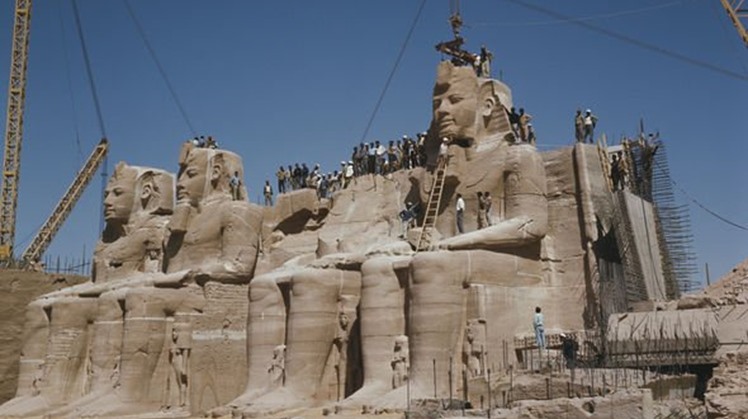Abu Simbel Temple was gifted by King Ramses II to Queen Nefertari, his main and beloved wife, and adorned its façade with six colossal statues of equal size representing the king and queen in a clear demonstration of the high status enjoyed by the queen with her husband. Which depicted the queen worshiping different gods, either with the king or alone, and on this day, September 22, 1968 AD, the temple of Abu Simbel was moved, so how was that done?
The temple was carved in the mountains and dates back to the reign of King Ramses II in the 13th century BC, and it is a permanent monument to him and Queen Nefertari, to commemorate his victory in the Battle of Kadesh. , Ptah, and Amun, and four large statues of Ramses II stand out in the facade, and the smaller temple is dedicated to the god Hathor.
The temple of Abu Simbel was forgotten until 1813, when the Swiss orientalist GL Burkhardt found the main corniche of the temple, and he talked about this discovery with his Italian counterpart, the explorer Giovanni Pelonzi, and they traveled together to the site, but they were unable to dig an entrance to the temple, and Pelonzi returned in 1817, but This time he succeeded in his attempt to enter the synagogue, taking everything valuable he could carry with him.
In 1960, the entire complex of facilities was moved to another place, on an artificial hill made of the dome structure, and above the reservoir of the High Dam in Aswan. The Nile River.
An international campaign of donations began to save the temple, and the rescue operation began in 1964, and this process cost 40 million dollars, between 1964 and 1968. New at an altitude of 65 m and 200 m above river level, it is considered by many to be one of the greatest works of archaeological engineering, and some structures have been rescued from under the waters of Lake Nasser.
 Wed, Sep. 22, 2021
Wed, Sep. 22, 2021